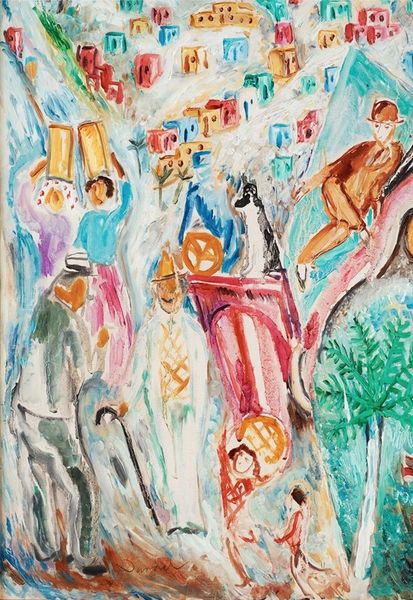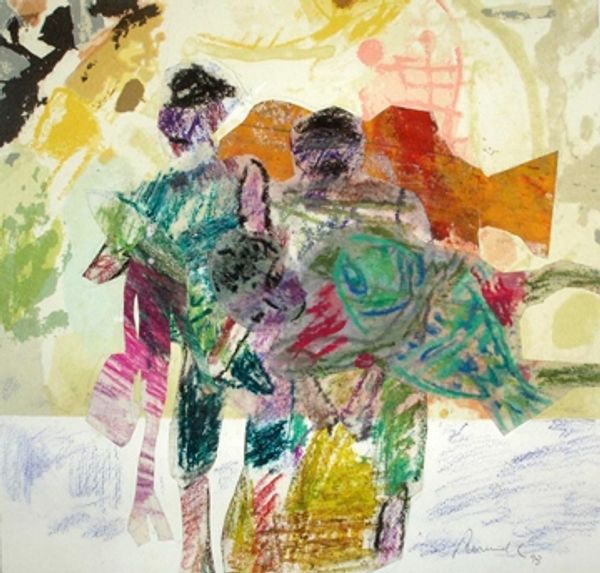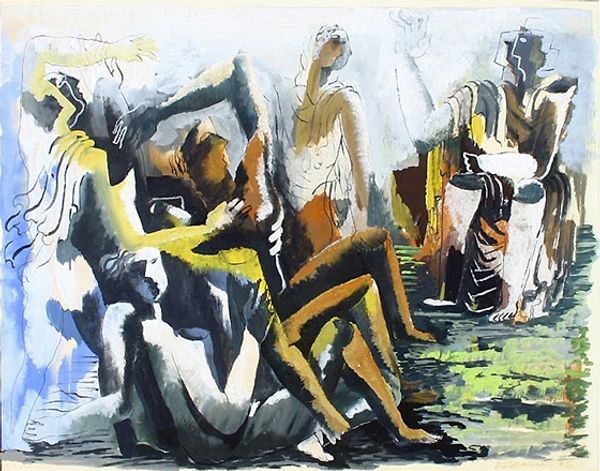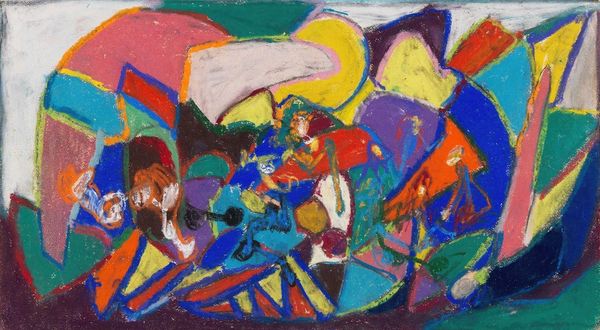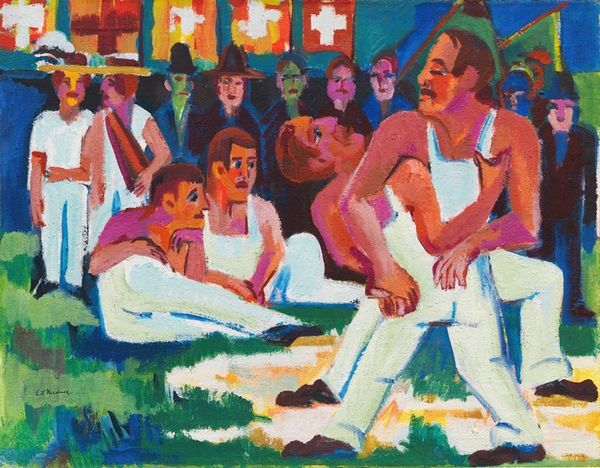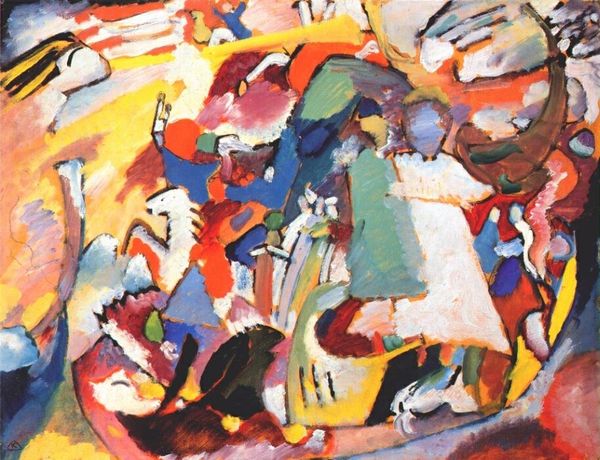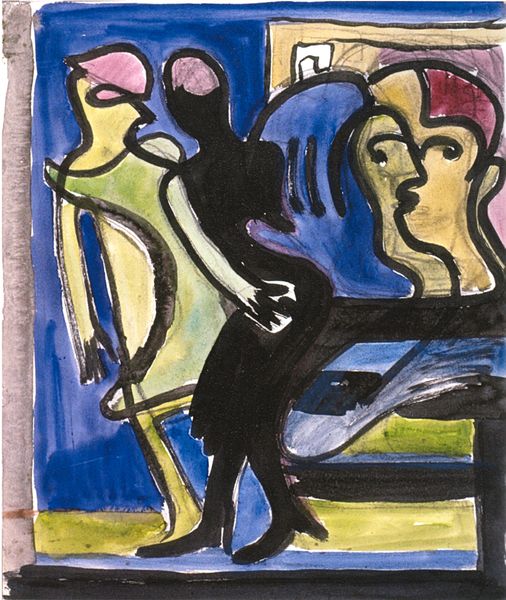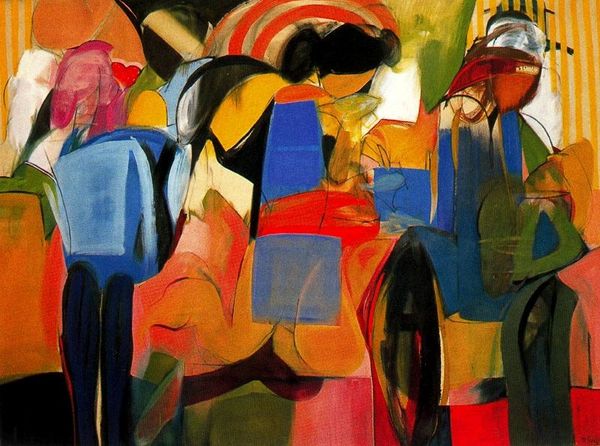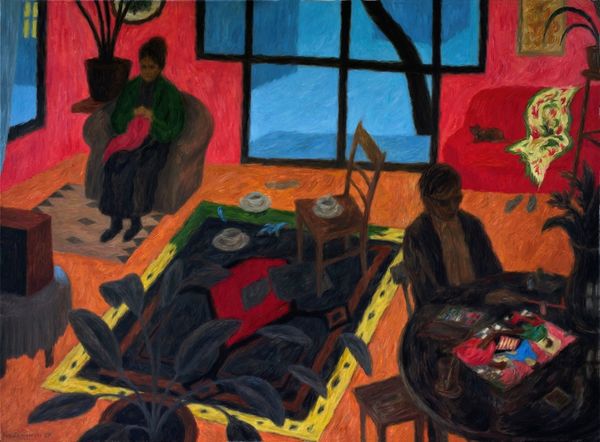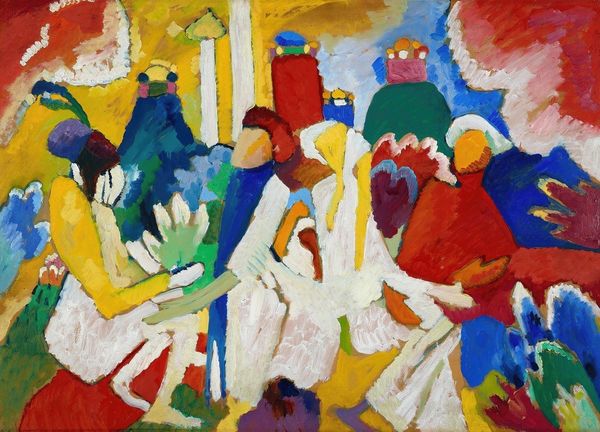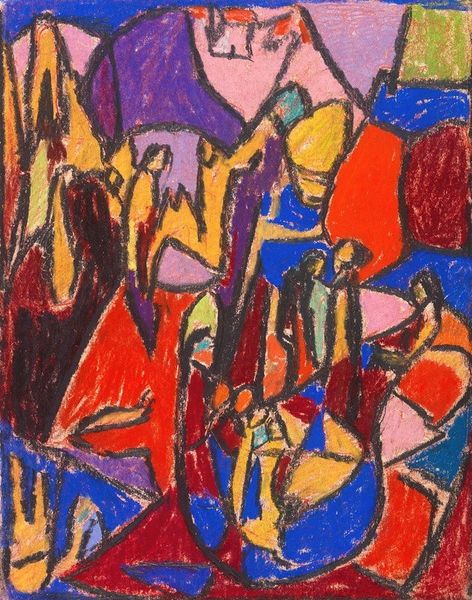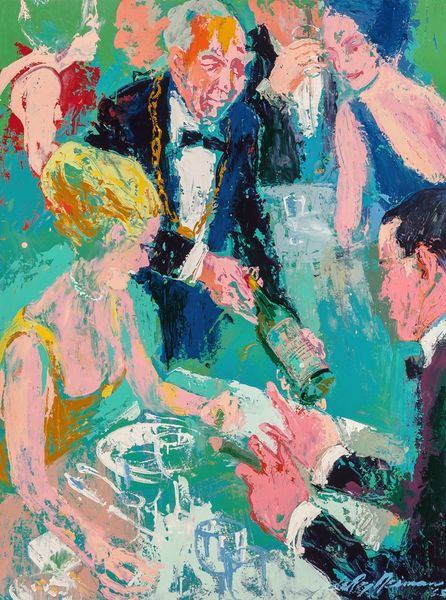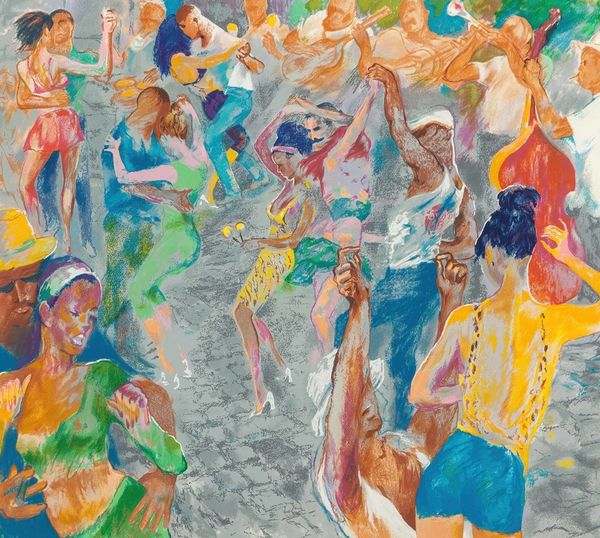
Copyright: Public Domain: Artvee
Editor: Here we have Ernst Ludwig Kirchner's "Familie auf der Wiese," painted in 1922, with watercolor on paper. It’s a lovely, yet slightly unsettling, depiction of a family in a field. What do you see in this piece? Curator: I see a challenge to the traditional, often idealized, representations of family. Kirchner was working in the aftermath of World War I, a period of immense social upheaval and questioning of established norms. Look at the disjointed composition, the almost aggressively un-harmonious colors. Does that suggest a family portrait celebrating bourgeois values? Editor: No, it feels more… complicated. Almost like the family is fragmented. Curator: Exactly! Consider the backdrop of post-war Germany. Kirchner's work often grapples with themes of alienation, the breakdown of social structures, and the psychological toll of conflict. Even the idyllic setting of the "Wiese," or meadow, is disrupted by these anxieties. Where do you see the conflict played out here? Editor: Well, there's the reclining man, almost isolated in his own space, while the women and children seem detached, existing in separate planes. The vibrant colours clash rather than harmonize. It almost speaks to a disconnect. Curator: Precisely. The Expressionist style emphasizes subjective experience over objective representation. So, how does this fragmented portrayal speak to broader issues of identity and social change of that period? Consider the role of women in post-war society, for instance. Editor: It does seem like it's asking questions about traditional gender roles and the shifting dynamics within families during that time. This wasn’t simply a portrait; it’s a commentary on societal fracture. Curator: And, crucially, how the personal and political are inextricably linked, challenging us to re-evaluate our understanding of family and societal structures. It’s more than a painting; it's a social commentary of a family unit in post war Germany. Editor: I hadn’t considered the broader context, which reshapes my understanding completely. Curator: That's the beauty of art history, isn't it?
Comments
No comments
Be the first to comment and join the conversation on the ultimate creative platform.
